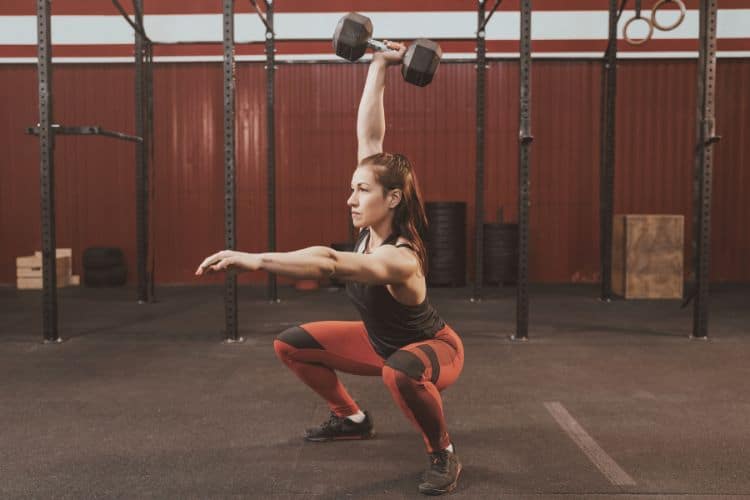Sign up for workout ideas, training advice, reviews of the latest gear and more.






Strength training remains one of the most effective ways to build lean muscle, increase metabolism, strengthen joints, and improve overall fitness—and dumbbells are one of the best tools to do it. A 45-minute dumbbell strength training workout gives you the perfect balance of intensity and volume, allowing you to challenge every major muscle group while keeping your heart rate elevated for added calorie burn. With just a pair of dumbbells and a well-structured routine, you can sculpt your body, boost strength, and train efficiently from home or the gym.
This complete 45-minute dumbbell workout is designed for all fitness levels, offering modifications, progressive overload options, and intentional programming to maximize results. Whether your goal is fat loss, muscle growth, improved endurance, or a full-body conditioning session, this routine delivers.
Below you’ll find a comprehensive guide, warm-up, workout structure, circuits, and tips to help you get the most out of your 45-minute strength session.
A 45-minute session hits the sweet spot between time efficiency and training volume. It’s long enough to challenge muscles thoroughly but short enough to fit into the busiest schedule.
Here’s why 45 minutes works so well:
The routine focuses on compound lifts, which target multiple muscle groups at once. Exercises like squats, deadlifts, presses, and rows recruit major muscle fibers and stimulate muscle growth effectively.
Strength training triggers EPOC (excess post-exercise oxygen consumption), causing your body to burn calories long after your workout ends. The combination of moderate-to-heavy dumbbells and steady pacing maximizes this effect.
Training with dumbbells mimics real-life movement patterns. This enhances coordination, stability, and mobility—important for injury prevention and everyday activities.
In 45 minutes, you perform enough reps, sets, and rest intervals to fully challenge the muscles without dragging out the workout. If you push with intention, it’s all you need.
This workout can be completed at home or in a gym. Here’s what you’ll want to prepare:
Pick a weight that feels challenging by the last 3–4 reps but doesn’t compromise form. You should complete the sets with effort, not strain.
This 45-minute dumbbell strength workout includes:
Each circuit targets major muscle groups with compound and isolation exercises. Rest periods are intentionally structured for maximum strength output and minimal downtime.
Set your timer and prepare to sweat. Follow the workout exactly as written for balanced strength development.
Before diving into the workout, warming up is essential for injury prevention and performance. The goal is to increase heart rate, activate key muscles, and loosen the joints.
Perform each movement for 45 seconds, with 10–15 seconds to transition.
This warm-up activates the glutes, core, chest, shoulders, and back—everything you’ll need for the circuits.
Complete 3 rounds of the following exercises:
This circuit mixes foundational strength movements that target multiple muscle groups simultaneously.
The goblet squat targets the quads, glutes, hamstrings, and core. Holding the weight in front forces the core to engage while keeping your chest lifted.
How to Do It:
Hold one dumbbell vertically at chest height. Stand shoulder-width apart. Lower into a deep squat, pushing hips back and knees out. Drive up through your heels.
This builds a strong back, biceps, and rear delts.
How to Do It:
Hold a dumbbell in each hand, hinge at the hips, and keep a flat back. Pull elbows toward your ribs and squeeze the shoulder blades.
Chest, shoulders, and triceps get an excellent pump here.
How to Do It:
Lie on a bench or the floor. Press dumbbells straight up, lower with control, and squeeze your chest at the top.
Essential for posterior chain strength—hamstrings, glutes, and lower back.
How to Do It:
Keep soft knees, hinge at the hips, and lower dumbbells while maintaining a flat back. Drive through the glutes to stand tall.
Build powerful shoulders and upper-body strength.
How to Do It:
Press dumbbells overhead while keeping your core tight and ribs down.
A unilateral strength builder that improves balance and coordination.
How to Do It:
Step back or forward into a lunge, lowering until both knees are at 90 degrees. Keep dumbbells at your sides.
Complete 3 rounds:
These movements elevate your heart rate while still building lean muscle.
A full-body compound movement that works legs, shoulders, and core.
How to Do It:
Hold dumbbells at shoulder height. Squat deeply and explode upward, pressing weights overhead.
This exercise targets your core, back, arms, and stabilizers simultaneously.
How to Do It:
From a plank position holding dumbbells, row one weight at a time, keeping hips square.
Targets glutes, hamstrings, inner thighs, traps, and shoulders.
How to Do It:
Take a wide stance with toes slightly out. Deadlift the dumbbells from the floor and pull them up toward chest level.
Combines upper body strength with horizontal pulling power.
How to Do It:
Perform a push-up on dumbbells, then row one dumbbell up. Alternate sides.
An upper-arm strengthening movement focusing on the brachialis and forearms.
How to Do It:
Keep elbows tucked and lift dumbbells with palms facing in.
Targets the long head of the triceps.
How to Do It:
Hold one dumbbell overhead and lower behind your head, then press back up.
Choose one dumbbell for stability and perform the following movements for 40 seconds each with 10 seconds rest.
Push harder in this final section—it’s short but powerful enough to increase calorie burn and finish your muscles strong.
Cooling down improves flexibility, decreases muscle soreness, and restores heart rate.
Hold each movement for 20–30 seconds:
To get the best results from this workout, follow these guidelines:
Aim to increase one variable each week:
Your body adapts quickly to training, so increasing difficulty is key to ongoing progress.
Improper form limits muscle recruitment and increases injury risk. Always prioritize technique before increasing dumbbell load.
A braced core protects your spine, stabilizes movements, and increases power output.
This helps maintain rhythm and strength throughout the routine.
Don’t rush. Controlled reps equal more muscle engagement and better gains.
This training style offers numerous benefits:
Dumbbell training is versatile, effective, and scalable to all fitness levels.
This routine is great for:
If you want to incorporate this into a full program, try:
A 45-minute dumbbell strength training workout is one of the most effective and efficient ways to build muscle, burn calories, improve strength, and boost your metabolism. With intentional programming, strategic exercise selection, and consistent progression, you can make incredible changes in your body—no fancy equipment or hours in the gym required.
Stick to this routine 2–3 times a week and watch your strength, confidence, and energy rise. Dumbbells are powerful tools—and this workout puts them to full use.
For more strength-focused training content, explore the full collection of workouts on Women’s Fit Club. If you want to build even more power in the upper body, check out our dumbbell rows workout and learn proper pulling mechanics. Strengthen your lower half with our detailed kettlebell leg workouts or upgrade your home routine with our full-body strength training workouts for all fitness levels. Women looking to shape and define their arms will love our triceps workouts for women, and if you need a beginner-friendly approach, start with our beginner weight lifting routine to build foundational strength before progressing.
Stay up to date on the latest women’s health, fitness and lifestyle trends and tips.